A fly fishing trip to Montana is an unforgettable experience, but careful planning is key to making the most of it. Choosing the right time of year, location, and gear ensures a successful and enjoyable adventure.
Travel and Flights to Montana
If you’re flying into Montana for your trip, you’ll likely arrive at either Helena Regional Airport (HLN) or Bozeman Yellowstone International Airport (BZN), both of which offer convenient access to prime fishing waters and plenty of attractions on and off the water. Depending on your destination, one airport may be a better fit for your plans.
Helena Regional Airport is just a few miles northeast of downtown Helena, making it an ideal choice if you plan to fish the Missouri River, the Land of Giants, Holter Lake, the Blackfoot River, or the Upper Clark Fork River. Helena’s central location provides quick access to these renowned fisheries, along with the charm of Montana’s capital city.
Bozeman Yellowstone International Airport, located about eight miles northwest of downtown Bozeman, is another excellent option. It provides easy access to the world-class fisheries of southwest Montana, including Yellowstone National Park, Paradise Valley, and numerous blue-ribbon trout streams.
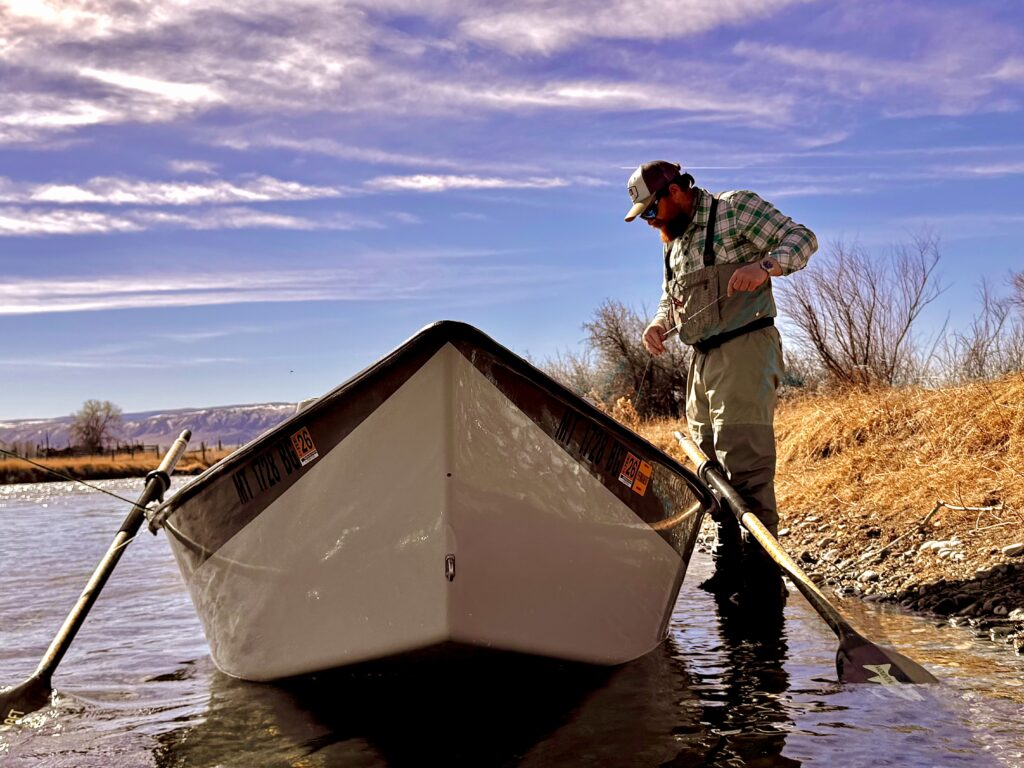
Book Your lodging and Fishing Guide Early
If you’re new to fly fishing or unfamiliar with Montana’s waters, hiring a guide is highly recommended. A knowledgeable guide can help you navigate the river from a drift boat, select the right flies, and refine your casting technique. Local guides also offer valuable insights into the area’s ecosystem and history. With their deep understanding of the waters they fish, they can greatly enhance your experience. Our top guides are often booked a year in advance, especially for Land of Giants trips, so be sure to plan ahead!

Choose the Right River to Fish
When choosing the right river for fishing in Montana, consider factors such as the type of fishing experience you’re seeking, the time of year, the species of fish you want to target, and your skill level. Montana is home to hundreds of miles of rivers, streams, and lakes, all of which offer incredible fly fishing opportunities. Some of the best locations include the Yellowstone River, the Big Blackfoot, and the Missouri River.
When choosing a location, be sure to consider spring runoff. Spring runoff in Montana refers to the period when snow melt increases water flow in rivers and streams due to warming temperatures. This annual event typically occurs in late spring or early summer as temperatures rise, causing accumulated snow in the mountains to melt and flow downstream. Spring runoff can significantly impact fishing conditions.
Another consideration is dewatering during Montana’s haying season. Hoot owl restrictions may also apply when fishing our freestone rivers late in the summer, when water can be warm and low.
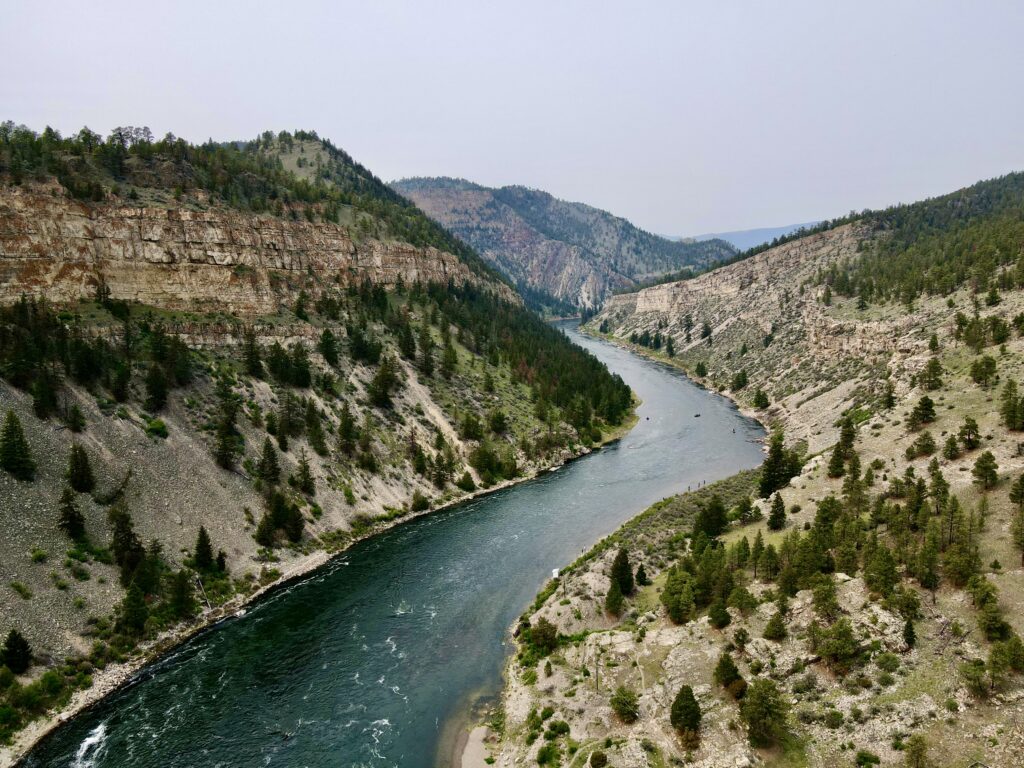
Pick The Right Time of Year
Peak fishing season typically runs from April to November. The best times to fish in Montana depend on what kind of fly fishing you enjoy. The height of dry fly fishing is in July, with terrestrials, caddis, and Pale Morning Dun in abundance. For the die-hard streamer junkie, it’s hard to beat spring and fall, with October being our favorite month. Nymphing can be done year-round. Each season can also bring its own challenges, such as weather or water conditions. Be sure to communicate with your outfitter about the weather and water flows to help prepare.
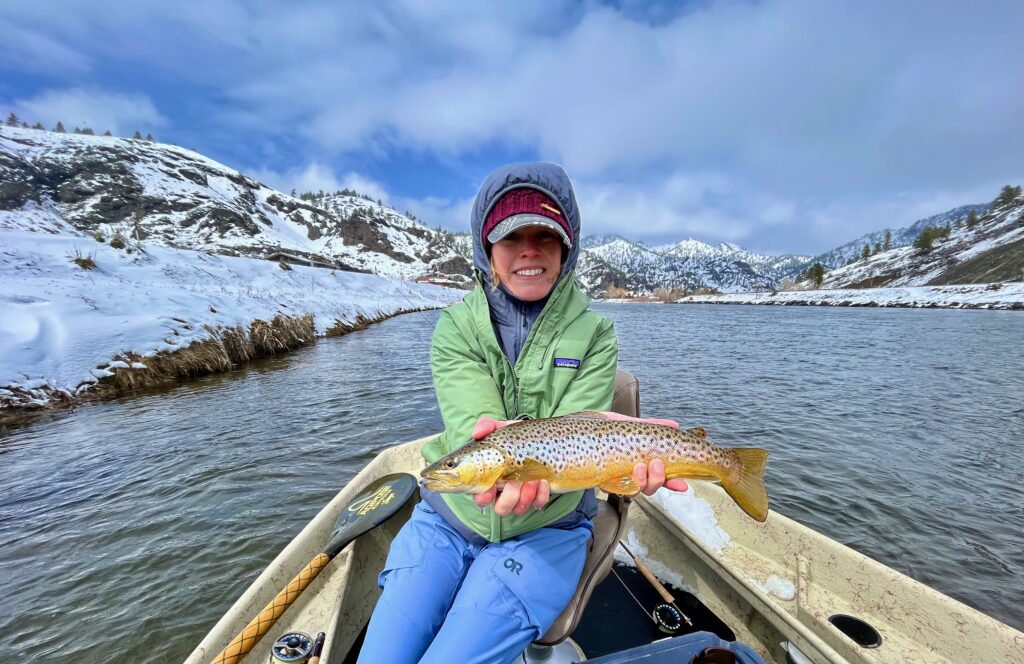
Pack Proper Clothing for the Season
When fly fishing in Montana, you’ll need the right gear. Below are some key items when packing and planning for a Montana fishing trip.
Spring and Fall Fishing:
- Layering System:
- Start with a moisture-wicking base layer to manage sweat.
- Add an insulating layer like a fleece or down jacket for warmth.
- Wear a waterproof and windproof outer layer to protect against rain and wind.
- Waders and Wading Boots:
- Quality breathable or neoprene waders, depending on the water temperature.
- Insulated wading boots with good traction.
- Headgear:
- Brimmed hat for sun protection.
- Beanie or hat for warmth in cooler temperatures.
- Gloves:
- Fingerless gloves for dexterity while handling fishing gear.
- Insulated waterproof gloves for colder days.
Summer Fishing:
- Lightweight Clothing:
- Lightweight, breathable long-sleeved shirts and pants to protect against the sun.
- Quick-drying materials are ideal for warm weather.
- Wading Sandals or Shoes:
- For warmer days, consider wading sandals or lightweight wading shoes.
- Sun Protection:
- Sunglasses with UV protection.
- Sunscreen with a high SPF rating.
- Buff or neck gaiter to protect your neck and face from the sun.
- Rain Gear:
- Pack a lightweight, packable rain jacket for unexpected showers.
General Considerations:
- Insect Protection:
- Insect repellent to ward off mosquitoes, especially in the evenings.
- Consider lightweight, long-sleeved shirts and pants for added protection against biting insects.
- Comfortable Socks:
- Moisture-wicking socks, especially if you’ll be wearing waders.
- Backpack or Daypack:
- Carry a small backpack with essentials like water, snacks, a first aid kit, and any additional layers you may need.
- Dry Bag:
- Keep valuables and electronics in a waterproof dry bag.
Remember that conditions can change rapidly, so it’s advisable to be prepared for a range of weather scenarios. Check the weather forecast before your trip and be ready to adjust your clothing accordingly.
Fishing Equipment
While on guided fishing trips equipment can be provided, most anglers are more comfortable with their own gear. If you choose to bring your own gear a 9′ 6 weight is a great all around fly rod for Montana. ( Click Here for our recommendations on fly rods).
Respect the Environment
Montana’s waters are some of the cleanest and most pristine in the country, and it’s important to keep them that way. When fly fishing in Montana, always follow the rules and regulations, and practice catch and release whenever possible. Limit time fish are out of the water. Wet your hands before handling. Rules and regulations can be found by clicking here. } Rules and Regs Also, be sure to pack out all of your trash and respect the natural environment. Let’s try to leave it better than we found it.
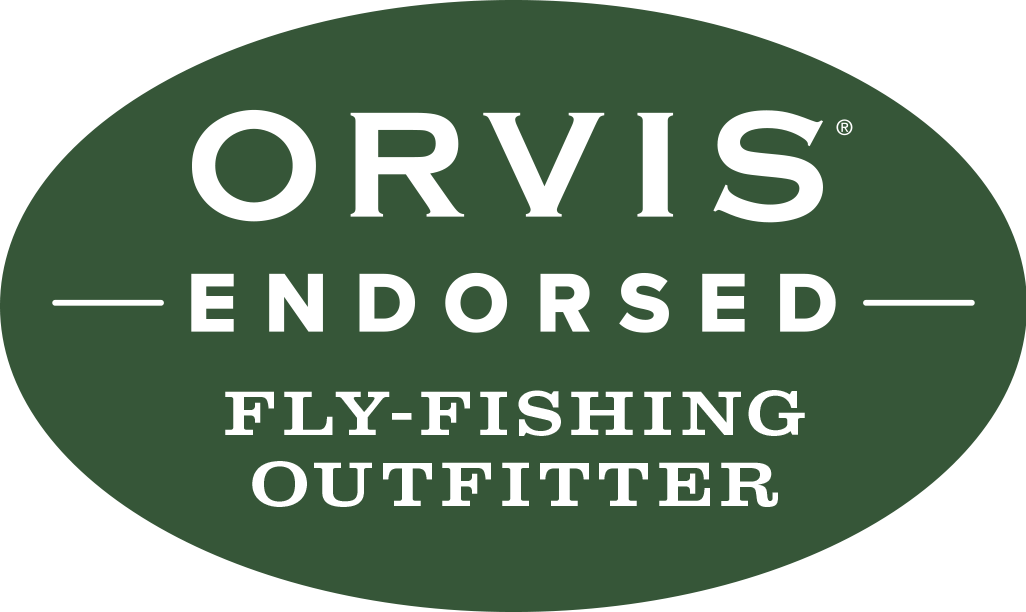
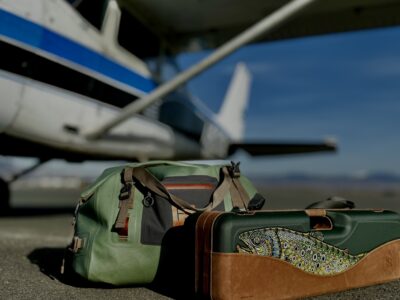
 Fishing for Northern Pike in Montana
Fishing for Northern Pike in Montana
Leave a Reply